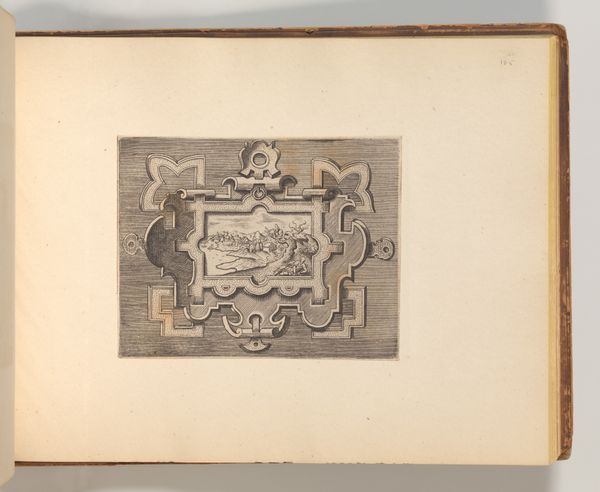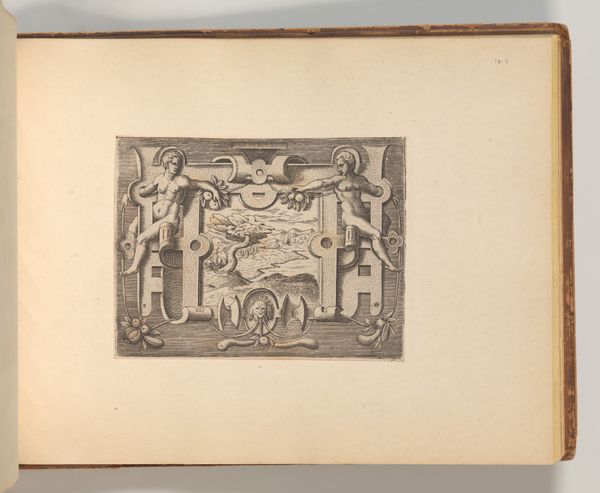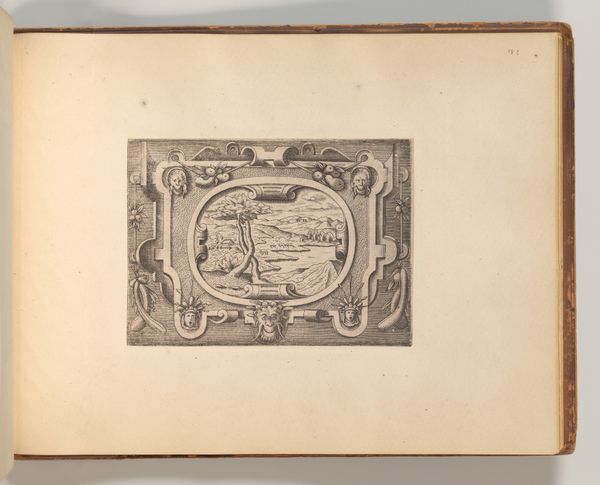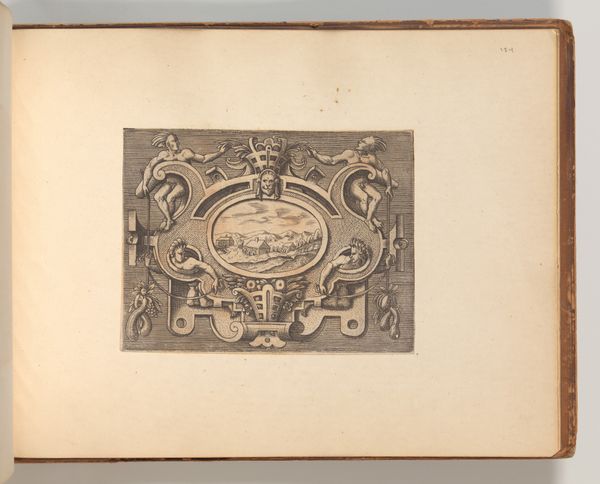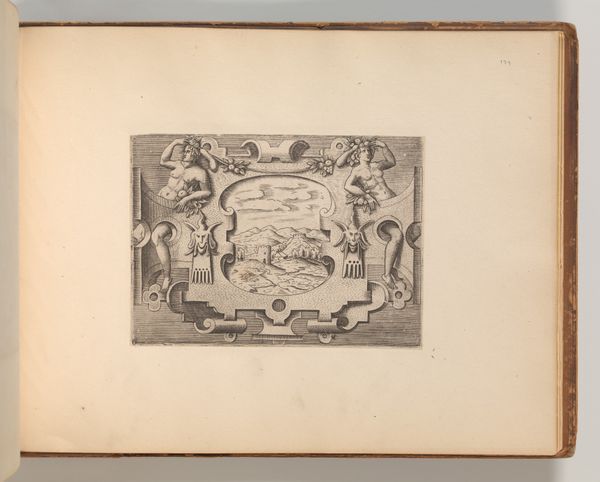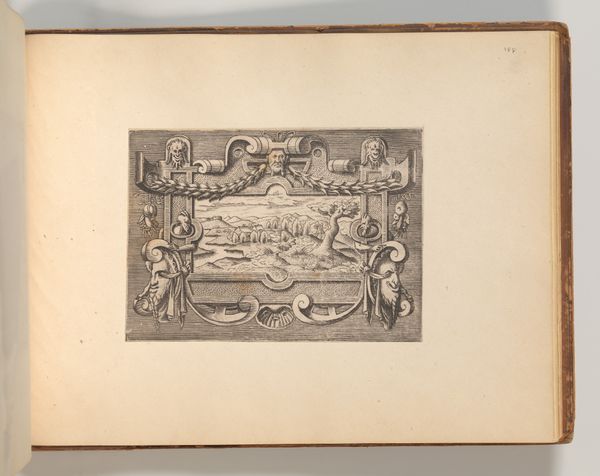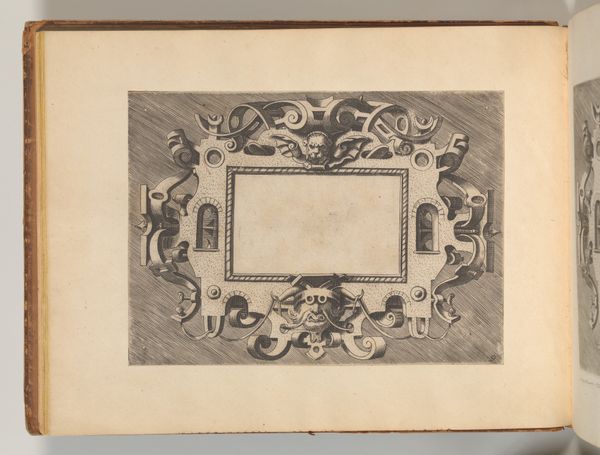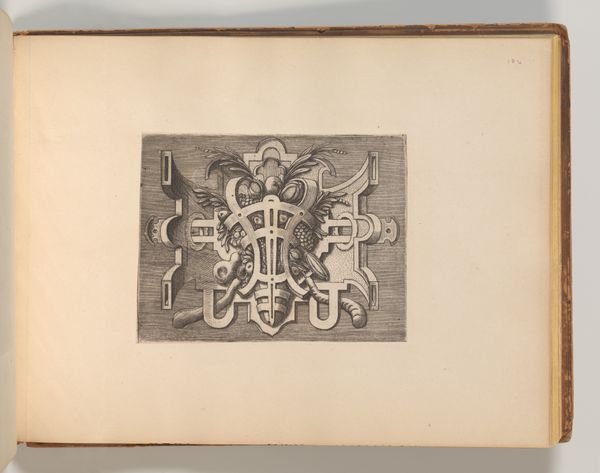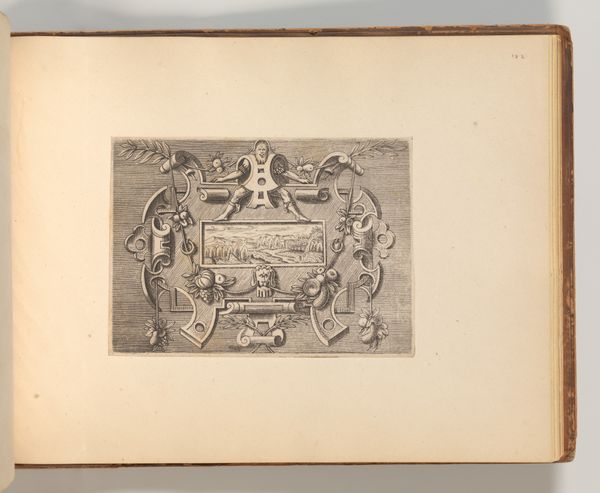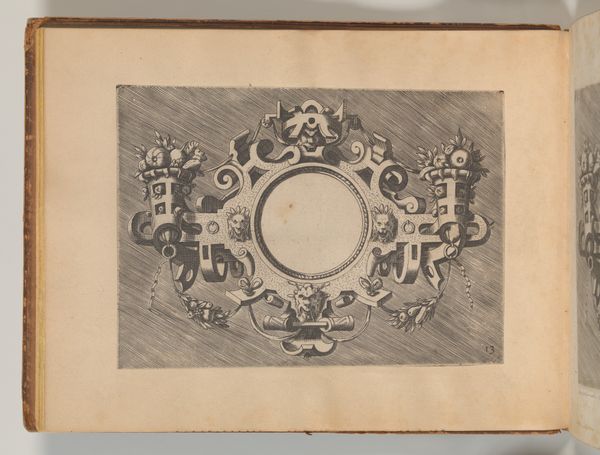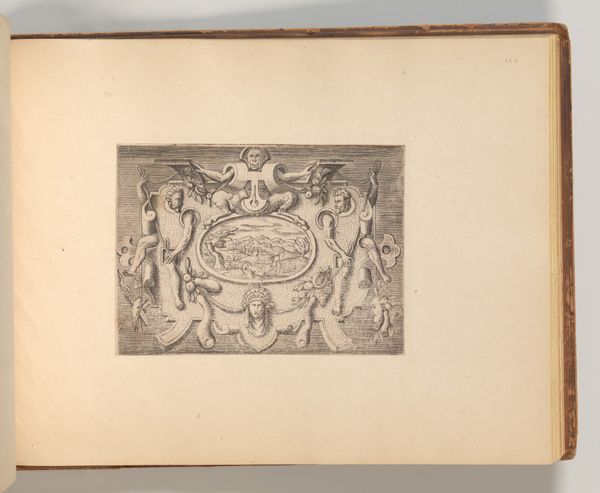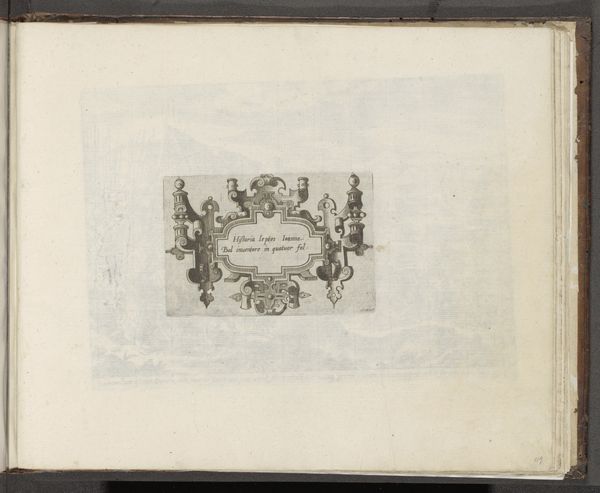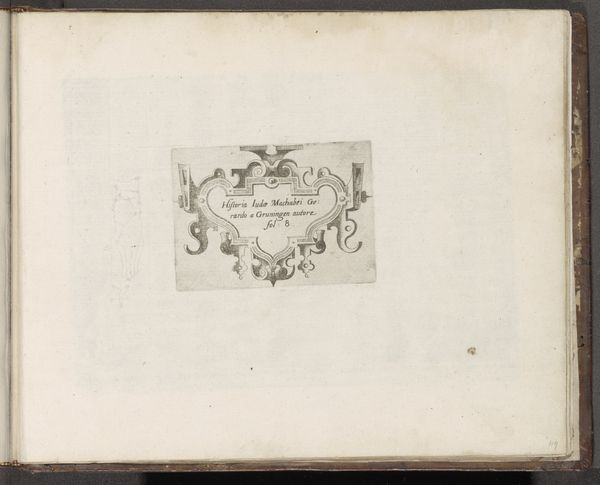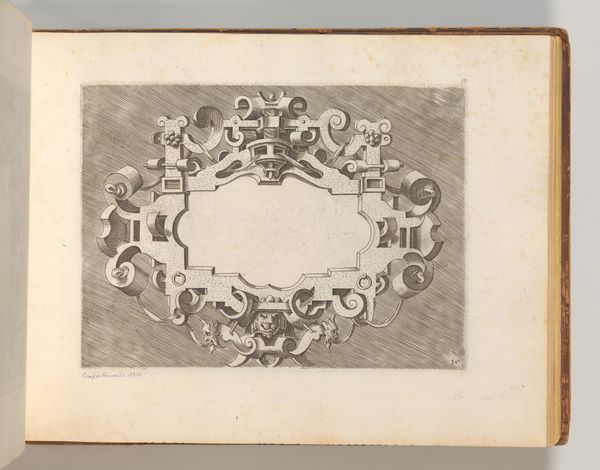
Series of Cartouches, in: Targhe ed altri ornati di varie e capricciose invenzioni (Cartouches and other ornaments of various and capricious invention, page 47) 1540 - 1560
0:00
0:00
drawing, ornament, print, engraving
#
drawing
#
ornament
# print
#
form
#
11_renaissance
#
line
#
italian-renaissance
#
engraving
Dimensions: Sheet: 7 7/8 × 10 5/16 in. (20 × 26.2 cm) Plate: 5 1/8 × 11 13/16 in. (13 × 30 cm) Overall: 8 1/4 × 10 5/8 in. (21 × 27 cm)
Copyright: Public Domain
Curator: This is a page from "Targhe ed altri ornati di varie e capricciose invenzioni," or "Cartouches and other ornaments of various and capricious invention," a series of engravings by Cornelis Bos dating from between 1540 and 1560. Editor: It's rather formal, almost imposing, with those stark, geometric borders. A sense of rigid control defines the space and presentation, don't you think? Curator: Certainly. We see Bos working within the Mannerist style here. The clean, sharp lines reflect the interest in classical forms characteristic of the Renaissance, while the elaborate, almost extravagant ornamentation is purely Mannerist. Editor: I'm interested in the power that these cartouches hold. They define not only art but also function, they suggest the ability of art to legitimize and celebrate. It's a kind of propaganda of self, no? How does the framework relate to social identity at this moment? Curator: Good question! Engravings such as this one provided patterns for artisans working in various media - from metalwork to furniture making. It's interesting how these designs both catered to and shaped the tastes of the elite classes, reinforcing social hierarchies through the replication of their imagery in elite households and civic spaces. Editor: The tension between form and function here is particularly interesting to me. It’s about something as quotidian as furniture, yet still imbued with these lofty ideas of humanist culture and identity. Curator: Exactly! This image offered a language to express power during a very particular time, as classical ideals met the desire for display of personal wealth. And that's where this example speaks to us, still. Editor: That really underscores how context is not simply background, but fundamental. We have to see the era’s ambitions—its struggles over self-representation, too—in these ornaments. Curator: Agreed. It allows us to appreciate how objects of the past actively participated in shaping cultural values, and in the long run, influencing our present values.
Comments
No comments
Be the first to comment and join the conversation on the ultimate creative platform.
